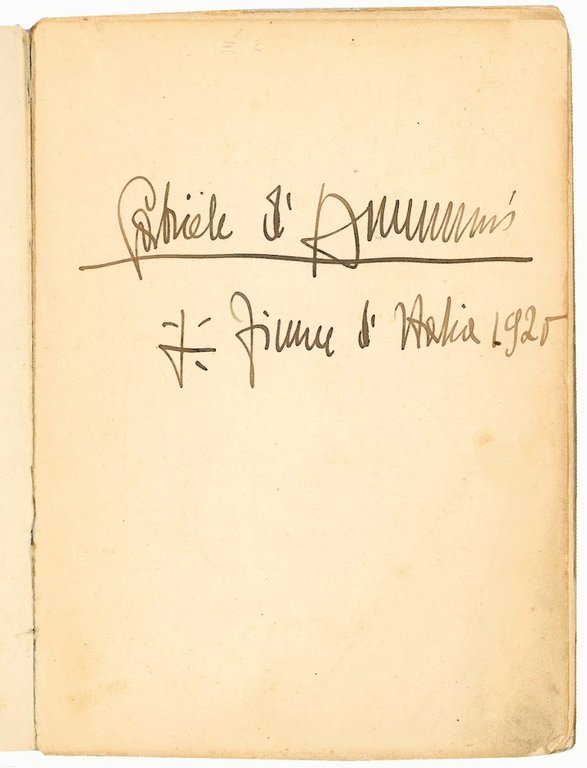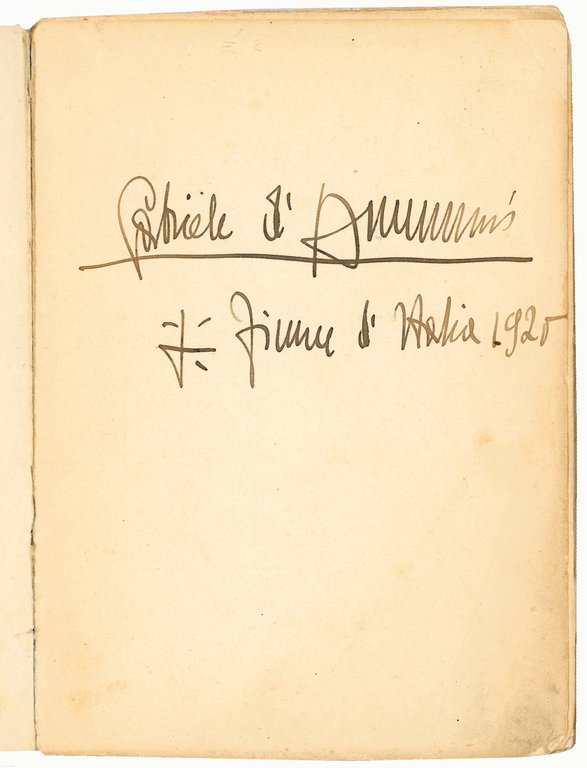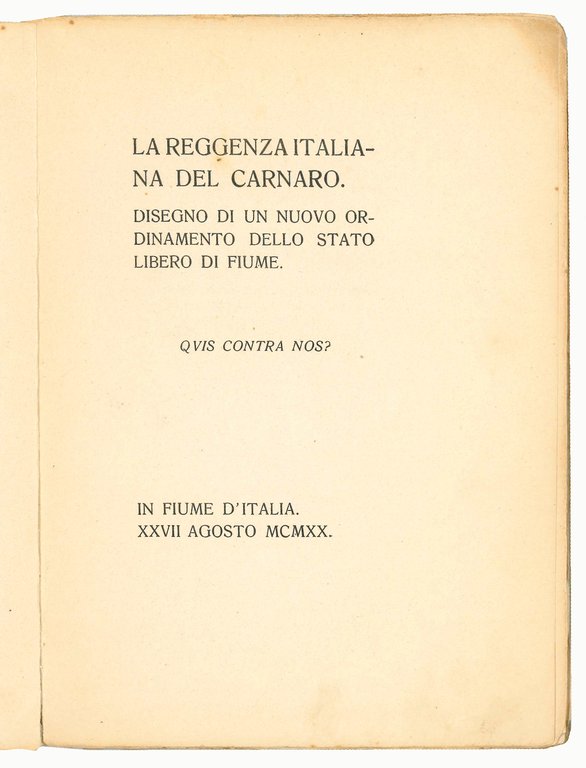





Libri antichi e moderni
D''ANNUNZIO, Gabriele (1863-1938)-DE AMBRIS, Alceste (1874-1934)
La Reggenza Italiana del Carnaro. Disegno di un nuovo ordinamento dello Stato libero di Fiume. "Qui contra nos". In Fiume d'Italia, XXVII Agosto MCMXX
Tipografia Miriam, 27 August 1920
non disponibile
Govi Libreria Antiquaria (Modena, Italia)
Parla con il LibraioLe corrette spese di spedizione vengono calcolate una volta inserito l’indirizzo di spedizione durante la creazione dell’ordine. A discrezione del Venditore sono disponibili una o più modalità di consegna: Standard, Express, Economy, Ritiro in negozio.
Condizioni di spedizione della Libreria:
Per prodotti con prezzo superiore a 300€ è possibile richiedere un piano rateale a Maremagnum. È possibile effettuare il pagamento con Carta del Docente, 18App, Pubblica Amministrazione.
I tempi di evasione sono stimati in base ai tempi di spedizione della libreria e di consegna da parte del vettore. In caso di fermo doganale, si potrebbero verificare dei ritardi nella consegna. Gli eventuali oneri doganali sono a carico del destinatario.
Clicca per maggiori informazioniMetodi di Pagamento
- PayPal
- Carta di Credito
- Bonifico Bancario
-
-
Scopri come utilizzare
il tuo bonus Carta del Docente -
Scopri come utilizzare
il tuo bonus 18App
Dettagli
Descrizione
16mo (196x140 mm). 70, [2] pp. Editor's printed wrappers (slightly worn). At pp. 21, 38 and 39 the word “Repubblica” has not been replaced with the word “Reggenza” as in later issues. Signed by the author on the front flyleaf recto: “Gabriele d'Annunzio Fiume d'Italia 1920”. Some quires loose. A very good full-margined copy, partly still unopened.
First edition, printed in one hundred and ten non-commercial copies, of the full text of the “Carta del Carnaro”, a visionary constitution combining the sociological and political insights of Gabriele D'Annunzio with the revolutionary spirit of Alceste De Ambris. The present volume is in the first issue, in which the word “Repubblica” (‘Republic') has not yet been replaced for political reasons with the word “Reggenza” (‘Regency'). The word “Repubblica” still appears on August 31 in the Fiume newspaper “Vedetta d'Italia” and on September 1 in the “Popolo d'Italia”, but is corrected in the official version published, likewise on September 1, in the “Bollettino ufficiale del Comando di Fiume d'Italia” (‘Official Bulletin of the Fiume Command of Italy').
Presented publicly by D'Annunzio at the Fenice Theater on August 30, the extremely modern republican “Carta del Carnaro” became the constitution of the free town of Fiume. It was written by De Ambris and D'Annunzio in the hope of extending to all of Italy the movement of clear revolutionary and republican inspiration that was taking shape in Fiume.
After World War I Fiume, today Rijeka in Croatia, was disputed between the Kingdom of Italy and the newly born state of Yugoslavia. It was conquered by rebel units of the Italian army, known as D'Annunzio's 1,000 “legionaries”, on September 12, 1919, during the march from Ronchi (a small town near Gorizia), with the intention of proclaiming the annexation of the city to Italy and thus forcing the hand of the delegates then in attendance at the Paris peace conference. The expedition was led by the poet and novelist Gabriele D'Annunzio and organized by a political coalition headed by the Italian Nationalist Association (Associazione Nazionalista Italiana), with the participation of Futurists and revolutionary syndicalists. De Ambris joined D'Annunzio in Fiume in January 1920.
The new constitution, divided into sixty-five articles, went into effect on September 8, 1920, and transformed the Istrian city of Rijeka and surrounding territories - soon to be annexed to Italy in the hope of D'Annunzio - into a temporary regency and a sort of free city-state. The text of the charter is based on a draft prepared by the Fiume command's chief of staff, the anarchist and syndicalist Alceste De Ambris, and rendered into poetic form by D'Annunzio. The result is a unique example of a constitution in free verse. In particular, D'Annunzio transformed De Ambris's text into art prose with the systematic use of archaic terms taken from the language of ancient municipal and corporate statutes to designate modern institutions and magistratures.
The new statute enshrined a decentralized democratic republic, in which the implementation of laws was entrusted to seven rectors. At the top of the system was the figure of the commander, who could assume dictatorial powers only in cases of extreme danger. The “Carta del Carnaro” also assigned a leadership role to labor organizations, extended universal suffrage to women, introduced divorce, made military service mandatory for both men and women, established a Free University and public schools of fine arts, decorative arts, and music, to whose importance in public life an entire article is dedicated.
The adventure ended shortly thereafter. With the Treaty of Rapallo of November 20, 1920, Fiume was declared a free city, and on December 26 of the same year the new Italian government headed by Giovanni Giolitti forced D'Annunzio and his followers to evacuate the city.
In the “Carta del Carnaro” D'Annunzio infused his poetic taste and progres

